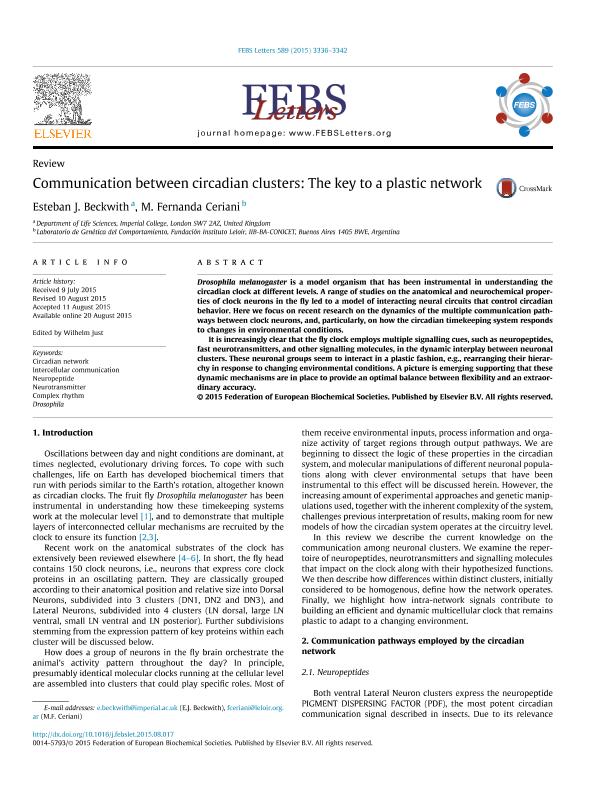Artículo
Communication between circadian clusters: the key to a plastic network
Fecha de publicación:
08/2015
Editorial:
Wiley
Revista:
Febs Letters
ISSN:
0014-5793
Idioma:
Inglés
Tipo de recurso:
Artículo publicado
Clasificación temática:
Resumen
Drosophila melanogaster is a model organism that has been instrumental in understanding the circadian clock at different levels. A range of studies on the anatomical and neurochemical properties of clock neurons in the fly led to a model of interacting neural circuits that control circadian behavior. Here we focus on recent research on the dynamics of the multiple communication pathways between clock neurons, and, particularly, on how the circadian timekeeping system responds to changes in environmental conditions. It is increasingly clear that the fly clock employs multiple signalling cues, such as neuropeptides, fast neurotransmitters, and other signalling molecules, in the dynamic interplay between neuronal clusters. These neuronal groups seem to interact in a plastic fashion, e.g., rearranging their hierarchy in response to changing environmental conditions. A picture is emerging supporting that these dynamic mechanisms are in place to provide an optimal balance between flexibility and an extraordinary accuracy.
Archivos asociados
Licencia
Identificadores
Colecciones
Articulos(IIBBA)
Articulos de INST.DE INVEST.BIOQUIMICAS DE BS.AS(I)
Articulos de INST.DE INVEST.BIOQUIMICAS DE BS.AS(I)
Citación
Beckwith, Esteban Javier; Ceriani, Maria Fernanda; Communication between circadian clusters: the key to a plastic network; Wiley; Febs Letters; 589; 22; 8-2015; 3336-3342
Compartir
Altmétricas




